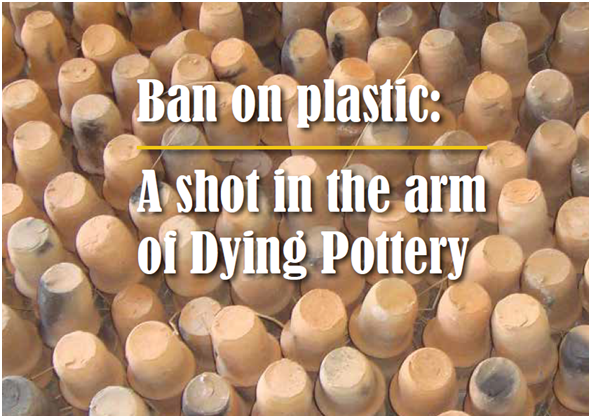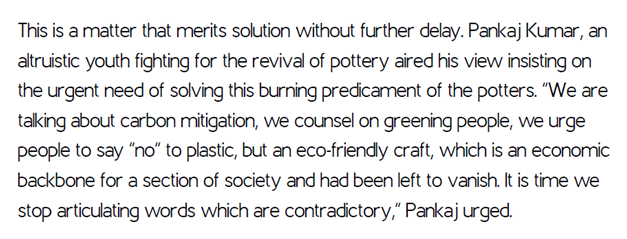
Plastic has entered our planet in 1870. John Wesley Hyatt, an American extracted plastic from a material called celluloid. By 2015, the world produced 322 million tons of plastic. But realization of adverse impact of plastic on environment has dawned. Today, the world has to struggle to recover from plastic deluge. In this battle, against plastic human must achieve victory and, failing that, plastic will lay us to the rest. If human is the part of problem, human can be a part of solution to that problem. The recent call of avoiding the single-use of plastic sound convincing. It is going to be just a step forward friendly to Nature considering the host of human activities which are detrimental to Nature. The natural environment is dying for a much-needed respite from plastic pollutant. The move is laudable given the disastrous effect of this nuisance on our planet. It should have been a reality long ago, because non-biodegradable plastic has already taken toll on the health of environment, but better late than never.
The move, luckily, will kill two birds with one stone. That is banishing both the plastic from planet and the unemployment from society. So, it is expected to give a big shot in the arm of the potters who are staring bleak future. The beleaguered artisans are keeping their fingers crossed for the return of the glorious past of their bread winning vocation. As along with bamboo craft pottery has to face the onslaught of aggression of plastic. In this regard, tumbler, a clay-crafted container, had been the casualty of this aggression.
Euphoric over the turn of the event, potters could not help welcoming the long awaited move. Dinesh Kumar, who sources his sustenance from pottery said: “Days of our vocation have already been numbered following the flooding of market by plastic. Tumbler’s disappearance from potter’s wheel inflicted a blow to our already battered state.” Virtually vanished from the top slot of their list of earthen wares, tumbler had been extensively used. In wedding, water and curd used to be served in tumbler. Also used in auspicious occasions including the festival of lights, lion’s share of the earnings made by potter was from selling earthen glass.
Widespread use of earthen glass in the picnic spot is imperative. Picnickers equipped with plastics go to natural site only to leave them.
“The cloud from our head will vanish with the resurfacing of the tumbler. What is more, If we can bring back tumbler from oblivion, it will be curse on the plastics which are curse on our planet,” viewed Dinesh. The craft is practiced by two classes of potters. The Kumar makes the pots on potter’s wheel which are used in auspicious occasion and The Hira moulds daily used clay-made vessels.
Clay is dug out from the reserve plot of land. Clay is mixed with water to make it pliable. The clump of clay is put on the moving wheel where the desired shape of earthen glass is given by hands.
However, a major problem has cropped up for the artisans. Problem lies in garnering the clay from reserved plot of land. In Assam’s Kamrup district, potters have been hit hard. They have been harassed. They faced resistance in collecting clay from land reserve. We are not permitted to collect clay. “Collection of clay does no harm to the plot. It is beyond our comprehension why we are denied permission,” said potters. Potters have to bring the clay within three month from January to March. They have tried to sort out the problem through deliberation but to no avail. “We submitted memorandum to Civil Authority; nothing has happened so far,” said Madhab Das.
Kishore Talukdar
To read the further articles please get your copy of Eastern Panorama November issue @http://www.magzter.com/IN/Hill-Publications/Eastern-Panorama/News/ or mail to contact @easternpanorama.in

